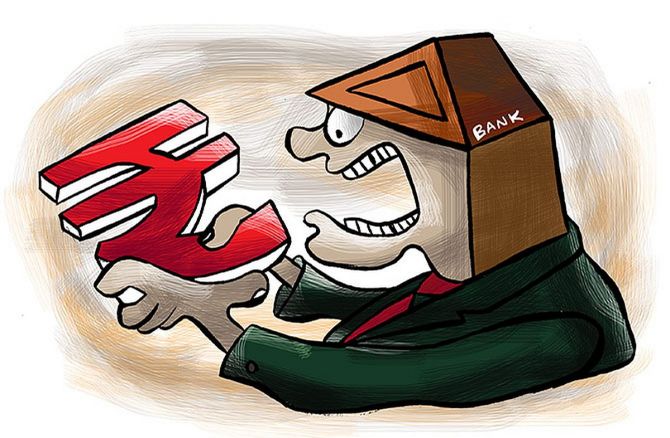In a bid to gain a bigger share of the customer’s wallet, banks are ramping up their cross-selling initiatives.
Report Abhijit Lele and Raghu Mohan.

What you sell matters; how you do it matters even more.
More than 80 per cent of Axis Bank’s retail assets are sourced from existing customers.
And yet, last year, the bank made a fresh start with “Aarambh”, to enhance product personalisation and cross-selling.
“It’s a first-of-its-kind initiative that provides both existing and potential customers with customised products using in-house proprietary algorithms involving multiple data sources,” explains Praveen Bhatt, executive vice-president and head (retail liabilities and direct banking channel) at Axis Bank.
The focus at State Bank of India (SBI), too, is to ensure that the products being sold are aligned with the appetites of customers
SBI chairman Dinesh Khara explains: “The income from cross-selling has grown 30 per cent year-on-year for the last three years.
"There is a separate customer value enhancement unit for this activity.
"The potential is huge and the ramp-up is significant.”
But, despite all the chatter about getting a larger share of the customer’s wallet, Indian banks’ cross-sell ratio — the number of products and services they hawk to a customer — remains low.
The best in class puts it at 3.5, though there is no data in the public domain.
This is despite renewed interest in a game that helps banks to both reduce the cost of customer acquisition and conserve capital, which is expensive.
“On our digital distribution platform YONO, we have also given this functionality for people to buy insurance, life and non-life and investments like mutual funds and credit cards,” says Khara.
Of course, there is the risk of mis-selling.
“At branches, we ensure that those working are trained in product information, besides certification.”
Yet, you can’t get away from the fact that the cross-sell ratio of Indian banks is less than desired.
Behind the curtain
Shyam Srinivasan, managing director and chief executive officer of The Federal Bank, believes that cross-selling can be creatively interpreted: “Let’s look at the definitional.
"You open a savings account and get a debit card issued.
"You can’t view this as a cross-sell of two. It has to be a car or home loan.”
This has implications for an industry reeling under margin pressure — the wholesale book of banks has been under stress owing to a sluggish economy and rising dud loans.
This has been sought to be compensated with a shift to more profitable retail loans.
Take State Bank of India. Its ratio of wholesale-to-retail loans may soon be 50:50; in HIFY20, it was 53.9:46.1, compared to 57.3:42.7 in FY19, and 59.6:40.4 in FY17.
Similar swings have been seen at Punjab National Bank, ICICI Bank and Axis Bank.
The Financial Stability Report of July 2020 hints that even retail credit growth is slowing down — growth in FY20 was 14.6 per cent, down steeply from 20.3 per cent in FY18.
This was seen as a set-off for the abysmal wholesale credit growth figures for the same periods — 3.2 per cent and 7.5 per cent respectively.
Neeraj Swaroop, head, Centre for Financial Services at the S P Jain Institute of Management & Research, has his own explanation for low cross-sell ratios in India: “Cross-sell is low because banks are also siloed.
"While technology can enable you to get a comprehensive outlook on customers, it is still some time away.”
Swaroop, former country head of Standard Chartered Bank in India, and later for ASEAN, also points to the incentive structure in banks, which he says, “tends to reward those in the wealth management business, as compared to those who look after loan products.”
Banks are also not hiring enough of those with wider retail experience.
Swaroop is an example of it.
He started his career with Ponds, launched Bank of America’s retail banking in the mid-1990s, and the same at HDFC Bank, before he went on to join StanChart.
A senior banker laments: “What you saw in the mid-2000s, when private banks hired big time from retailing, is not there anymore.
"The pull from both organised retail and fintechs is bigger for professionals.”
What is implied is that for cross-selling in banks to go up meaningfully, both internal structures and manpower have to be reimagined in the highly commoditised banking sector.
| The case of Wells Fargo |
|
Wells Fargo is the world-leader in cross-selling among banks, with a ratio consistently near six. Its business model was sought to be emulated by banks around the world. One pitfall of the desire to hike cross-selling is greed. In 2016, Wells Fargo was involved in the alleged creation of over two million fake bank accounts by thousands of Wells Fargo employees. It was asked to pay $185 million in fines for creating over 1.5 million accounts and 500,000 credit cards that its customers never authorised. The American Consumer Protection Bureau levied $100 million in fines, while $50 million in fines were imposed by the City and County of Los Angeles, and $35 million in fines by the Office of Comptroller of the Currency. Additional civil and criminal suits had reached $2.7 billion by the end of 2018. |












 © 2025
© 2025